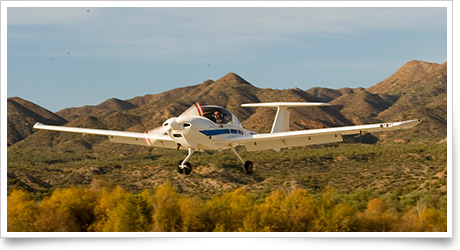| The following stories from the Mar. 16, 2012, edition of AOPA ePilot were provided to AOPA members who expressed an interest in the particular subject areas. Any AOPA member can receive information tailored to their areas of interest by updating their preferences online |
training tips‘Full-stall’ landings A full-stall landing—simply a “normal landing”—employs a power-off stall to complete a touchdown that occurs smoothly as the aircraft is decelerated to approximately V SO. While flaring to land, the pilot adds sufficient back-pressure to maintain a gradually decreasing descent rate, which just before touchdown is almost nil, allowing the aircraft to gently contact the runway. Maintaining back-pressure once the wheels are rolling lets aerodynamic braking assist deceleration to taxi speed. A common error is adding so much back-pressure that the descent stops too high above the runway, or the trainer balloons upward—in either case possibly leading to a hard landing. Lowering the angle of attack, and simultaneously adding power to cushion the touchdown, or going around—is the remedy. Another common error is the pilot being unwilling to flare aggressively enough to manage the descent, resulting in premature touchdown in a nose-low attitude, a bounce, or in extreme cases, porpoising—a worsening series of hard touchdowns causing many landing mishaps. You can banish those problems from your landing technique by heading back to the practice area and performing some power-off stalls, using a predetermined altitude as an imaginary runway in the sky. Starting, say, 100 feet higher than the selected altitude, descend in the landing configuration. As the altitude is approached, idle the power and flare as required to keep the aircraft from descending any lower until the stall occurs. Recover as usual for power-off stalls as provided in the practical test standards. During the maneuver, note the gradual nature and extent of the up-elevator force you must apply, and when any pre-stall buffeting occurs. Be smooth but assertive with control inputs, making sure to use enough back-pressure to keep from contacting your “runway.” This may take full back-elevator. Maintain direction with rudder (as you would in an actual landing). Returning to the traffic pattern for landings, feel more confident about timing your flare and applying control pressures needed to execute a proper full-stall landing. Be sure to review the Air Safety Institute’s Takeoffs and Landings Safety Advisor for additional insights. training productsSporty’s Learn to Fly CourseSporty’s has revamped its popular learn-to-fly course from the ground up. The course now can be used by those training for the sport, private, or recreational pilot certificate, and you can choose from three formats— DVD, online, or iOS app for the iPhone/iPad—for one price. The course includes video footage and 3-D animations, a practical test standards study guide cross-referenced for the video, a training course outline, and a test endorsement for the knowledge test. Each course is priced at $249. Order online or call 800/776-7897.
Note: Products listed have not been evaluated by ePilot editors unless otherwise noted. AOPA assumes no responsibility for products or services listed or for claims or actions by manufacturers or vendors. final examQuestion: What can cause carburetor icing, and what are some of the first indications of its presence?
Answer: A combination of decreasing air pressure and vaporization of fuel in the carburetor’s venturi causes a sudden cooling of the mixture to take place. The temperature of the air passing through the carburetor can drop dramatically, sometimes within a fraction of a second and as much as 60 to 70 degrees Fahrenheit. This cooling squeezes water vapor out of the air and, if the temperature in the carburetor is below 32 degrees Fahrenheit, moisture will be deposited as frost or ice, usually in the vicinity of the throttle valve and in the venturi throat. This restricts the flow of fuel and air and reduces power. The first indication of carburetor ice in an airplane with a fixed-pitch propeller is loss of rpm. In an airplane with a constant-speed propeller, the first indication is usually a drop in manifold pressure. For more on carburetor icing, read the Air Safety Institute’s Safety Brief Combating Carb Ice .
Got a question for our technical services staff? E-mail [email protected] or call the Pilot Information Center, 800/872-2672. Don’t forget the online archive of “Final Exam” questions and answers, searchable by keyword or topic. |
 Stalls aren’t everybody’s cup of tea. Exploring stalls at the margins to seek out their aerodynamic tip-offs makes them more user friendly. Although emphasis in training is on recognizing and avoiding loss-of-control stalls—especially at low altitude—one brand of stall is essential for making a good landing.
Stalls aren’t everybody’s cup of tea. Exploring stalls at the margins to seek out their aerodynamic tip-offs makes them more user friendly. Although emphasis in training is on recognizing and avoiding loss-of-control stalls—especially at low altitude—one brand of stall is essential for making a good landing.

